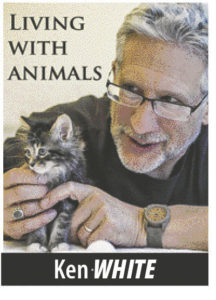A few weeks ago we explored hummingbirds in various indigenous peoples’ religions. This week we take an equally remarkable look at these birds as, well, actual physical birds. Great timing, since Peninsula Humane Society is not only our community’s safe place for homeless dogs, cats and other pet animals but also, unlike most humane organizations, cares for injured and orphaned native wildlife. Our wildlife staff and volunteers make well and return to nature some 1,500 wild animals annually. That includes everyone from Great Horned Owls to diminutive Anna’s Hummingbirds, all entirely funded by donations. Hummingbirds are typically the first species of orphaned babies we see every Spring. Our incubators are busy with them right now, and our flight cages house those who are able to self-care but not quite ready for release.
There’s no shortage of amazing hummer-facts: hummingbirds consume half their own weight every day, energizing that ability to fly straight up, helicopter-ish, and backwards, reaching speeds of 30mph with a heart that beats 1,200/minute (human’s heartrate is 60-100/minute). But let’s talk about those babies. Hummers come to us as hatchlings still in the nest, fresh out of eggs smaller than jellybeans, knocked to the ground by storms and tree-trimmers unaware of the little condo on the branch. Unlike most other birds, however, these babies stay firmly rooted into their nest, and that’s because of an unusual physical adaptation. When the babies first hatch their toes instinctively wrap into and curl around the nesting material beneath them, the two babies snuggled together tightly in a nest no bigger than your thumbnail. As they grow the nest is literally pushed outward by their growing bodies.
Imagine a dense, tightly woven material getting pulled and stretched well beyond its original size. Every thread making up that fabric would, of course, expand further apart from every other thread as the material stretches. Finally, at just the moment when the babies are strong enough and big enough to fledge, the spaces between those threads are stretched apart enough for the once hooked toes to lift free, and the beating of the wings – exercise up until this point – now lifts the animal from the nest. It’s an amazing protocol, magical really. Just like the rest of nature.

